The Rennian Resistance
The Rennian Resistance (sometimes also referred to as Ren's Second Rebellion), was a conflict between the New Roman Republic occupying the Irin Plateau, and the Irinian Freedom Council Resistance Forces, led by Sergio Ren.
Background
Four years later, in 227, the NRR was struck a devastating blow by power-hungry Senator Dracula P. Davis (Who later was revealed to be secret funder of the first rebellion). He used his high placement within the government to try and remove the popular, qualified, and skilled consul Lucius Rufus Brutus from his position, with the goal of promoting himself to that position. However, legendary businessman, inventor, and Senator Michael Osborne discovered his plot, and had him arrested for High Treason. He was executed on the 3rd of 227. However, he had his revenge, and had his goons publicise a secret transaction that the NRR had made years before, where they secretly counterfeited nearly $ 1 trillion MON. In an attempt to appease the other nations running on the $ MON the NRR government agreed to publicly destroy an equivalent amount of cash. In doing so, and the economic fallout from the emptying of the treasury, the NRR government lost more than 95% of the NRR Treasury, which left the Senate with only $9,973,000,000 MON to run the country and army, which normally ran on an annual budget of $10,000,000,000,000. To compound their problems, the NRR-Ottenburgian Army (a supposedly joint project with their neighbour nation, the Ottenburg Empire) had been decimated after an Ottenburgian invasion of the BBR. Despite being a “joint & equal project,” The NRR had to finance the majority of the Army’s costs to keep it upkept, so this was another striking blow to the NRR. In these economic & military disasters, Sergio Ren saw a second chance. A year after his first rebellion was destroyed, he had secretly re-entered the Campestrem Regionem, and begun to secretly recruit more people to his cause. Then he left to Nova Terra (another Territory of the NRR, where the citizens were also oppressed due to their previous rebellions), where he also recruited rebels. After a year of underground recruiting, Ren’s rosters contained the names of 4,987 people who would fight for him if it came to it. He was confident that, if he could get supplies, he would stand a better chance than in his last rebellion on pure numbers. Combined with the NRR’s Economic troubles, he believed that his second attempt would surely be more successful than in the previous round. So, in a surprise move one night, Ren’s best operatives blew a hole in the wall of the central Military Weapons Depot of the Campestrem Regionem; where the Romans had stored all the weapons they had captured during the first rebellion, and had begun to stockpile more. Almost all of them were transported back to Ren’s New Headquarters. He had supplies. In his final move of preparation, he re-recruited as many of the rebels from his first rebellion as he could. Of the 337 who had been captured but not executed, 197 had been released. All but eighteen joined Ren. Of the 397 who managed to avoid capture by the Romans, and still survived, all joined the second rebellion’s ranks. With 5,563 men and women behind him, ready to fight to the death for their independence, Ren just had to decide how he was going to do so. This time around, Ren planned his tactics extremely differently than the previous round against the Romans. Where he had stuck exclusively to guerrilla warfare and small, surprise attacks last time, this time he would pick and choose what battles to fight.
First Battle of Legoia
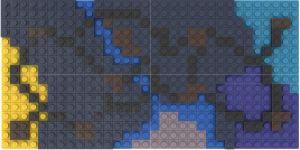
Ren chose to appear overconfident and underpowered, and lure the NRR army into a feeling of relative safety. To achieve that end, on the 8th of 227, he declared war on the NRR through a television broadcast in the capital city-Legoia- during which he showed the world his “might.” The Broadcast frightened the Roman General Alan Khardov, who was stationed in another quarter of Legoia with the 14th Lego Legion. Despite how small Ren’s army seemed, Khardov rushed to engage them, in fear of them doing significant damage to the center of Roman Campestrem. He rushed his army out of bed at 2:30 AM (25 minutes after the broadcast began airing) in order to engage the Rebels in the 4th Quarter of Legoia. Ren and the 2nd Resisting Division drew the 14th out of the North gate, where the Roman Legion was cut off by the arrival of the 1st, 4th, & 5th Resisting Divisions, while the 3rd Resisting Division stormed the city centre from the East Gate, taking the 14th’s Undefended Barracks and command centre. Khardov refused to let his soldiers surrender, and consequently the 14th was battered from every side in their coverless position for nearly 2 hours, losing 2,845 soldiers to the relentless fire of the surrounding Rebels, who lost a comparatively tiny 200 soldiers. Finally, Khardov, at the centre of the 14th, was killed by a surface-surface missile fired from one of Ren’s Missile-Laden Trucks. His subordinates immediately began waving any white objects that they could find, and telling their soldiers to lay down their weapons. All of them were arrested, and put in a Roman Internment Camp built for Rebels and Insurgents against the Authority of the Romans. The battle of Legoia was the first major Battle in the Rennian Resistance. Of the roughly 1,200 Romans who surrendered, nearly 100 died of major wounds within the next 24 hours, although the rest of them remained relatively healthy throughout the remainder of the war. With Legoia completely in their control, and almost all of the Roman Troops within the Campestrem either imprisoned or killed, the Rebels basically had control of the Campestrem Regionem. Ren dispatched the 1st Resisting Division to the North Western Cerlis County, the 2nd to the Southern Reiths County, the 3rd to the Northern Brutus County, the 4th to the Southern Balka County, and kept the 5th in Legoia, preparing for a Roman Counterstrike, which they knew would come, at some point. They just didn’t know how swift and strong the response would be, and how dangerous the Roman General truly would be.
From insta:
Circa 227, a few shots of General Sergio Ren's first address to the people of Legoia after their victory in the First Battle of Legoia, which was not only the first battle of the 2nd Rennian Rebellion, but the Rennian Resistance's first victory as well.
The Rennian Resistance routed the 14th New Roman Legion, led by General Alan Khardov, with the combined forces of the 1st, 2nd, 3rd, 4th, and 5th resisting divisions. The 14th Roman Legion, a force of just over 4,000 men, was expected to be able to hold the entire of the Campestrem Regionem, even against a larger opposition, due to the superior nature of New Roman training and supplies. However the 5,563 brave men and women who followed Sergio Ren through his quest to bring freedom to his adopted homeland proved more than a match. Not only had they been slowly stockpiling New Roman weapons and supplies, but they were lead by several of the greatest tactical minds that the world had ever seen. Ren himself, John Felt Osborne, Agaré Mileny, and Antonia Hadrian di Sala Serana (although she was not involved in the opening parts of the 2nd Rennian Rebellion).
During the First Battle of Legoia, 2,845 New Roman Soldiers lost their lives, and a further 98 died of wounds within a day, while only 200 Resistance Fighters perished through the entire ordeal. This shock to the New Roman power structure shattered any remaining civilian support for the New Roman Republic, and served as a pillar in the grand mythos surrounding the whole rebellion, despite the fact that the city was lost again to New Roman forces and remained under their control for most of the war, after the arrival of New Roman General James Krennic as well as the 60th, 70th, and 80th Avenging units to Legoia.
The Roman Counterstrike & Second Battle of Legoia
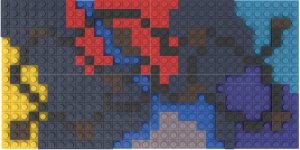
Just as Ren and his commanders had expected, the NRR Senate declared a National Emergency, as they watched the Campestrem Regionem suddenly begin to slip out of their fingers. With the Roman-Ottenburgian Army gone, they sent one their top Generals – James Krennic - to deal with the situation, along with the 12th Lego Legion, as well as the majorly undersized 17th Lego Legion (which had lost a large portion of its numbers in the Ottenburgian Invasion of the BRR). The Senate didn’t have the cash to fund a war, so they gave him an up-front float of resources and cash, and gave him total control of the resources of the Campestrem Regionem, where 1.4 million people lived. Krennic was an amazing tactician and leader, so his small force was not much of a handicap to his effectiveness. He quietly brokered a deal with the Latian Republic to allow his troops sail down the River Lisenne in exchange for a large sum of his cash float. Through camouflage and deceptive painting, he managed to disguise the nature of the boats that he sailed through down the Lisenne. The Rebels never suspected a thing, either, as they didn’t believe that the Latians would ever allow NRR Troops through their land. Krennic’s Ships landed all up the Lisenne, right near the three major crossing points of the wide, deep, fast river. On Krennic’s Command, Roman Soldiers rushed out of the “River Cruise” Ships, taking the Rennians completely by surprise. The Second Battle of Legoia took place lightning quick. Ren realised what had happened, and ordered his troops to evacuate the city. He lost many men during their flight. They chose to cross the river at the North Legoian Bridge, to try and re-unite with the 1st and 2nd. He also radioed the 3rd and 4th divisions, ordering them to make their way across the river, to mount an organized response to the Romans. However, just as his troops began crossing the North Legoia Bridge, Krennic detonated it, sending Rebels plunging to their death, and trapping the rest of the 5th on the wrong side of the river. What remained of the 5th turned on end, and outpaced the Romans to make it to Brutuville, where they re-united with the 3rd. The 5th had lost nearly a hundred men and women in the surprise attack, which was devastating. The 4th had left the Balki Capital of Inare for the Southern Bridge, but it had already been destroyed by the time they reached it. They returned to Inare for the time being, although they planned to rejoin the 3rd and 5th in Brutuville before too long. Krennic amassed all his forces in Legoia, and freed the POWs held there, growing his force to nearly 7,500 soldiers. Ren’s Western Forces remained separated from each other as well, holing up in Spar and Reiths, respectively.
Spar Siege
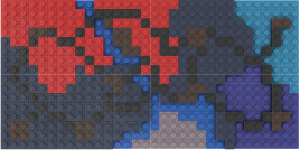
Krennic split his roughly 7,500 men into three “Units”, which he named the 60th, 70th, and 80th Avenging Units. He immediately dispatched the 60th to take on the Rebels who had dug themselves in west of the Romans in Spar, the County Capital of Cerlis. Krennic knew that, in order to win this fight, he had to conquer the Rebels before he ran out of supplies and troops. While the extra 1,100 soldiers he had freed from the POW camps were useful, they added more strain on his already thin resources. Although a Victory, the Cerlis Conflict set the stage for the Romans to Lose the Independence War. The 60th used the Roman’s boats to cross the Lisenne, and began Marching west to Spar. Spar sat on a small hill, amidst a very flat plain, which formed the basin of an ancient crater. As soon as the Romans entered the basin, they were visible to the 1st Resisting Division, who had dug trenches all along the exterior of the town, and were prepared to fight anywhere and everywhere necessary to keep the 60th at Bay. The 60th suffered significant casualties as they approached Spar Hill, before they were finally forced to dig themselves in, as well. They dug a Zig-Zag trench back to the rim of the crater, outside of which they began to log the surrounding forest, and slice the trees down into thick boards. Setting those above the trenches as rudimentary Defence, they began to dig their way towards Spar. Finally, they hit the foundations of an outskirt building. An Advance team blew a hole in the foundation, then dug, and fought, their way into the building. Once the Romans had control of the building, they began to fight their way into nearby buildings. Meanwhile, the 2nd Resisting Division had begun to mobilise towards Spar, along the long road via Spalke. The 60th managed to move the majority of their forces within the city boundaries by the second nightfall. During the night, things quieted down, as neither side could see the other. Krennic had planned for the battle to be over by the third day, budgeting for a full day of Street Fighting. However, the Rebels put up stiffer Defence than he had anticipated, and, by the end of the third day, the 60th had control of only the Southeastern quarter of the small town. The next day proved even less fruitful, as their previous gains had only brought them closer to the tallest building in town, where the Rebels had positioned many snipers. However, the 5th day proved quite fruitful for the Romans. They fought their way up the eastern side of the city. By the 5th nightfall, the Romans had full control of the eastern half of the town. However, the 2nd Resisting Division was much nearer now. The Romans needed a fast victory, and they hadn’t got one in Spar. What was supposed to be a skirmish, or perhaps a short battle, had become a siege. However, their victory was saved very narrowly when, on the 6th day of the Siege, they made a major breakthrough into the Northwest section of the town, and also managed to take the central bank outlet, where all the snipers had been stationed. Suddenly, the tide of the battle turned, and the Rebels began to fight to get the town back, rather than to keep the town. By nightfall, Roman Snipers had forced many Rebels out of position, and the Romans had firm control of the city. Under the cover of darkness, the last defence of the town was dropped, and the engines of the Rebels’ trucks roared to life, as they fled south, towards Rufusville. The Romans had conquered Cerlis County. During the fighting, about 150 Romans were killed, and almost 250 Rennians. Furthermore, of the ~40,000 civillians who lived in Spar, International Reporters counted 286 bodies of civilians. It was unclear which side inflicted collateral damage on the civilians.
Battle of Balka Lake
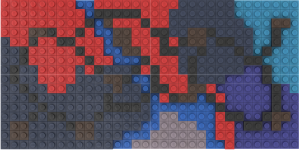
The 4th Resisting Division remained in Inare, the Capital of Balka County, awaiting an inevitable attack by another Roman Unit, which came two days after the Spar Siege began. The 80th Avenging Unit sailed down the Lisenne into Lake Balka. From the lake, they began to shell Inare, killing Civilians and Rebels alike. The 4th Resisting Division decided that they couldn’t allow constant shelling on the town of 150,000 people, so, on the first night of the attack, they moved out of Inare, just west, to the mouth of the stream, effectively cutting off the Roman Army’s retreat. They began to load their missile trucks late in the night, and began firing at the Roman Boats at dawn. The Romans had some countermeasures, though, and their boats suffered no serious damage. However, as soon as the Rebel bombardment subsided, they began firing back at the beach, completely routing the thousand Rebels on the beach. The 4th began to flee north, towards Brutuville, where the 3rd and 5th were already camping. The Romans sent their boats back North to Legoia with a skeleton crew, then began pursuing the 4th by Land. The Victorious Romans left behind a shattered Inare, which, even just from one night of shelling, had suffered 2,347 civilian deaths. 78 Rebels were left on the beach, killed by the Roman Shells, and 26 Romans were killed by Rennian Missile Fire. Ren, along with 3 of his Divisions, were now holed up in Brutuville, with two of Krennic’s Units bearing down on them, while Krennic himself led the 80th South towards Spalke, where the 2nd Resisting Division was getting settled. Krennic’s two fronts had scythed the Rebel Army down the center, which was completely destroying their ability to respond strongly.
The Southwestern Campaign
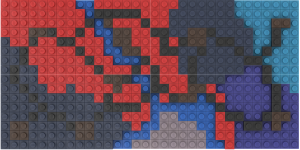
General Krennic personally commanded the 70th Avenging Unit south along the River to Spalke, where they engaged the 2nd Resisting Division early in the morning, shelling the army encampment, which was just to the south of Spalke. Unlike many of his commanders, Krennic avoided Civilian Deaths as much as possible, as he believed Militaries existed to fight other militaries, not Civilians. After laying down a cover of shells and smoke, the 70th Avenging Unit pushed up from the beach of the Lisenne, coming at the 2nd’s camp from two directions off of the two different ships. In the haze and smoke from all the shells, the Rebels never even saw the 70th approaching them. They suffered huge losses, and when they finally escaped their own camp, the 2nd was down 400 soldiers, which amounted to nearly half of the unit. Only 22 civilians were killed during the quick, painful, engagement, less than any other engagement yet in the war, barring the 1st Battle of Legoia.
They retreated quickly to Reiths, where they camped out beyond the city, along the road, which led to Rufusville, where the 1st Resisting Division was licking its wounds. Krennic was getting desperate at this point. He was running out of resources, and fast. And yet, he still hadn’t soundly defeated even one of Ren’s Divisions. Every time, so far, the majority of the rebels had escaped. Krennic was determined not to let this happen again. However, he had to rush off to try and command the Brutuville Invasion, where 3/5 of Ren’s army was now camping. He delegated authority of the attack on Reiths to his subordinate, 70th Centurion Yan Segira. Noting that the 2nd had camped beyond the city, Krennic made the decision to withdraw whatever artillery power they had left, and devote it all to Sieging Brutuville. Segira slowed down his army’s advance on Reiths, and quietly dispatched a large group of his own soldiers to, quickly, find a way to get behind what remained of the 2nd. Under Krennic’s oversight, his Unit had lost just under two hundred soldiers at Spalke, which was much higher than either had anticipated, but still left them plenty of men to spread out. Segira dispatched 700 of his 2,318 soldiers to flank the miniscule rebel force. Resisting Colonel Agaré Meleny had predicted that Segira would try and swing around and cut off their escape, so to combat that possibility, he dispatched 250 of his 642 soldiers to fan out into the surrounding woods and thwart Segira’s attempts to surround him. Col. Meleny also ordered his troops to begin slowly moving away from Reiths. As his advance party in the forest came into contact with the Romans, they realised that Segira had dispatched a far larger group than they originally anticipated. Meleny’s 250 Rebels were very outgunned by the 700 Romans. Meleny, realising that even his entire remaining force wouldn’t be enough to surely defeat all of the Roman Advance Party, and that retreating would only prolong the inevitable, and was in the interest of the Romans, made a decision that would grant him and every soldier a spot in the history books. Meleny gave the order that any soldier who was willing to die that day to stay with him, and anyone else should either turn themselves over to the Romans, or run away to join the 1st in Rufusville. 47 rebels left him to join the 1st. He ordered the 250 rebels in the forest to draw the romans around, and inflict as much damage as possible, without regard for escape. The other 345 raced with him, back towards Reiths, on the other side of which, the massive Roman force was approaching, with no way to know that the Rebels were in the city. Meleny told Civilians to move to the south sector as fast as possible, away from where the Main Road ran through Reiths, then moved his own forces into higher floors of buildings throughout the north part of town, and onto the roofs; Reiths was well known for its unusual abundance of flat roofs. Segira and his army approached Reiths, noticing nothing except that it was unusually quiet. However, once they were inside, the gates to the medieval city were slammed shut, and Segira realised the trap he’d just walked into. Gunfire broke out from the rooftops where rebels hid, and hundreds of grenades – homemade and otherwise – were lobbed into the street. Segira’s forces fell into panic, and began to scatter. Segira himself, while a highly decorated Roman Officer, had never needed to physically fight, although he spent much of his career on the front lines. He was struck by shrapnel in his left arm, a wound that he carried the rest of his life. However, he powered through his wounds to try and reorganize his army’s efforts. They retreated to the alleyways, where the line of fire was less direct, before Segira ordered them to begin storming buildings. Despite suffering heavy casualties, they began to clear out the rebels hiding in the buildings. Segira himself took refuge in a Diner that was believe to be cleared, to try and deal with his wound, but he was captured by a group of Meleny’s rebels, who had been hiding in the Diner’s walk-in fridge. They killed his Medic, and took him hostage, dragging him through the back streets to where Meleny was stationed. They hoped that, without Segira’s Leadership, the Romans would panic again, and become even easier pickings. However, Krennic had already done what he needed to. Slowly, the Romans began to clear the rooftop gunners out, and by staying indoors and in alleys as much as possible, they avoided much of the Grenade Fire that they had been subjected to in the initial stages of the battle. Meanwhile, in the forest, the 250 rebels, who had been handpicked by Meleny and his officers were inflicting incredible amounts of damage on the Romans. The forest part of the battle became known as the “Charge of Death,” as every Rebel fought until they were killed. In the end, the Romans captured 23 of the 250 Rebels who had entered the forest, and the rest lay dead among the trees. However, of the 700 Romans that went into the forest, only 248 walked out Every Rebel had taken at least two Romans with them. Inside the city, a similar story began playing out. Several captured rebels ended their own lives by pulling the pins of their own grenades, and taking several captors with them. Meleny’s position, where the injured Segira was being held, was eventually stormed. Meleny attempted to use Segira as a human shield, but made the mistake of standing to full height in order to shoot at the Romans coming up the stairs more easily. When he stood, he managed only a few shots before a Roman Sniper dropped him from a distant rooftop. Segira’s Forces spent nearly three days flushing out the last rebels, who put up an incredibly stiff defence. However, true to Krennic’s ideals, only 3 civilian fatalities were recorded, and all of them accidents. When Segira could finally open the town’s gates again, and reunite with the 248 forest survivors, he took with him 36 prisoners, who he imprisoned alongside the 23 captured in the forest. 309 Rebels had been killed inside the city. But with them, they had taken 874 Romans. Segira had won, but the battle had taken more time that he could budget for, and cost him 1,326 soldiers; More than half of the 70th Avenging Unit never left Reiths, including one of their band tribunes, Vincent Placcila Cavillus. After hearing a debrief of the result of the battle, Krennic wrote in his personal diary that “I have great respect for these Rebels. They are willing to die for their cause. They are resourceful. They are willing to do anything for their cause. They must truly believe in it. I do not believe there is anything I believe in so deeply. I truly can wish there was, but nothing comes to mind. Should every Rebel I have to fight is willing to die like these were, then the war may as well be lost.” Segira ordered most of what remained of the 70th to press forwards, towards Rufusville, where 870 members of the 1st Resisting Division awaited them. However, he realised that, in the Siege of Brutuville, Krennic had taken all of his Artillery and Surface-Surface Missiles, and thanks to the prolonged Battle of Reiths, they were in short supply of ammunition and rations, as well. He broke off 180 members of the 70th to return to Legoia under the command of his second Band Tribune, Jupitus Tuso, and resupply. Meanwhile, Krennic had travelled quickly to meet up with the 60th and 80th, who had closed in on Brutuville, where the 3rd and 5th had begun to prepare for siege, and the 4th had just arrived.
Battle of Brutuville
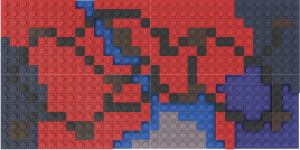
On the 14th day of the Second Rebellion – the same day that the Romans reconquered Spalke – 3,064 Rebels were in Brutuville, awaiting the arrival of 4,835 Roman Soldiers, the 80th approaching from the south, and the 60th from the east. The 60th had conquered Cerlis County with minimal casualties, and had rushed back through Legoia, not even stopping to restock their supplies, assuming that they would have enough supplies to defeat Brutuville and then return to Legoia to restock. Their forces spread out, and surrounded the Rebel city from the East, South, and West, cutting off their escape routes. Krennic issued an Ultimatum to Ren. It Read “To avoid civilian casualties, The Roman Army, in the name of the Roman Consul, Lucius Rufus Brutus, offers a chance to save civilian Lives. Provided that no Rebel Forces attempt to use our generosity against us, the Roman Army will refrain from bombarding any part of the city north of Lightfoot St. Informers within the city will tell us if a Rebel soldier sets foot north of there. Should any Rebel Soldier (s) abuse our generosity, we will no longer refrain from shelling civilians to weed out the Rebels among them. You have until sundown tonight to move the civilians.” Ren carefully read the hand-delivered message several times, and after careful discussion with the Colonels of the 3rd, 4th, and 5th, decided to take Krennic’s Offer. He sent back another message with the same Roman Courier, which read “General Krennic. My respect for you as a military adversary has grown. You may assume that this Rebellion is because I care for the wellbeing of the individuals living in the Campestrem Regionem. Because of your noble offer to save Brutuville from many painful deaths and injuries, without any additional damages to the chances of our forces, we accept this Proposal. Any Rebel Soldier who sets foot across Lightfoot St. will be assumed to be a traitor, and imprisoned or executed. We will do everything in our power to only have to fight you. However, do not expect mercy form us for this generous gift. Notwithstanding your generous offer, your subordinates have already killed nearly 2,700 innocent civilians. Any chance we will get to bring your centurions to justice, we will take.” Reportedly, it was during the writing of this document, with his colonels, that Ren uttered the famous line “I don’t fight for those who survived in Brutuville. I fight for those who died in Inare.” The Civilians were given notice of what happened, and began to move. Almost all of them were moved by nightfall. Krennic blared a loud horn an hour, and 30 minutes before nightfall, and as soon as the sun disappeared over the horizon, he gave the order to start shelling the Rebel section of the city. All through the night, the Roman Shells crashed down where Ren and his men were hiding out. Brutuville had an extensive underground tunnel system, that dated back to the War of Legoian Succession. Many Rebels took refuge in these tunnels, and avoided the sure death from above. Ren organized those on the surface, who attempted to avoid being destroyed the shells, which were destructive, but only struck the city every 30 seconds. Using one of the few Infrared Scanners they had, two of Ren’s technicians – George Spalding & Smith Coldbank – discovered a way to guess where any given shell would hit, and warn any Rebels in the immediate vicinity of the Roman’s target. Many rebels were saved that night because of those two technicians, both of whom Ren later decorated with the Order of the Crossed Blade. When the sun rose on Brutuville, after a long night of destruction, The Rebels, thanks to the underground tunnels, Spalding, and Coldbank, had suffered a lot less than initially expected. Only 107 men had been killed in the first night of the onslaught. Krennic sent an Advance Guard to test the Rebels, but as they approached Brutuville, they were mowed down by Rebels they couldn’t even see. Krennic was surprised at the resistance, as he was unaware of the tunnels under the city, and assumed he had done more damage than he truly had. So, he began shelling again. The 15th day of the rebellion, when the 70th arrived in Reiths, into the waiting teeth of the 2nd, saw the 3rd, 4th, and 5th bombarded constantly by the Romans. Krennic needed to take Brutuville, in order to free up enough troops to resupply in Legoia. His supplies were seriously dwindling, and his army grew restless as they watched Rations & Ammunition deplete quickly. Krennic needed a victory. Ren knew this though. In his own words, “[Ren] never was a better tactician than General Krennic. But Krennic was trying to fight a losing battle, for a failing Empire, and [Ren] knew that.” Ren gave the command that, no matter what followed, they would not leave Brutuville at any cost until at least the 18th day of the War. Krennic heard of this, and he began to get nervous. The latest he could maintain a siege on Brutuville was the 19th day. And even that would be pushing his luck, as he would have to send a lot of troops back to Legoia very quickly to try and restock everything they needed. Ren was betting on it. For the next three days, as the 2nd took down more than half of the 70th, the 3rd, 4th, and 5th were battered on every side by Krennic’s unrelenting forces. They lost soldiers, but a surprisingly low number, given the circumstances. Every morning, Krennic tested his opponents, but every morning the Advance Guard was pushed back, or even annihilated. Ren had chosen a good place to hole up for such a battle: The roads leading into Brutuville were raised, and there was little cover around them. The 18th day of the war saw Ren’s plan begin to fall, though. A higher number of casualties the night before left their exterior defence lacking, and the Advance Guard managed to make it within city bounds (what was left of the city, that is). Ren’s forces moved into retreat, trying to regroup in a position to take out the advance party. Eventually, they managed to, but not before the Advance Guard punched a hole in the Western Defense, and Krennic rushed the 60th in. Ren couldn’t retaliate, and ordered his troops to move into retreat. They amassed on the Eastern Side of town, where a portion of the 80th was blocking the road. However, Ren’s men were desperate, and needed a way out. They successfully baited the Romans into attacking them up the Eastern Highway, after which Ren’s forces hid in the rubble at the western edge of Brutuville, as the 60th began moving in the east, and opened fire on the members of the 80th that were advancing up the coverless eastern highway. Many of the 80th were killed in just a few minutes, and the 80th was sent into panic. Those at the front began to try and turn back, while those at the back, who didn’t know what was going on, continued forwards. Before enough order was regained to retreat, the 80th lost many soldiers in that foolhardy attack. Like all of Krennic’s Units, the 80th had a centurion, and under him two Band Tribunes. The 2nd Band Tribune of the 80th – Gaian Tiberius – had led the foolhardy attack up the Eastern Highway, which weakened them enough that the Rebels punched right through their lines, and, with a rear guard of trucks with lots of angry soldiers with guns, as well as some large, truck-mounted machine guns, successfully escaped. Tiberius ordered his own trucks to attempt to catch up with the rapidly fleeing Rebels, but several ran out of fuel on the way, and the rest didn’t have enough ammunition to do real damage to the mass of rebels moving west towards Gaius, in Iulius County. Krennic, on hearing that Tiberius’ foolhardy decisions had cost him the destruction of the rebels, was both infuriated, and relieved simultaneously. Infuriated on one had, because had Tiberius simply kept his ground, the Rebels would’ve been wiped out within the town, or on trying to exit on one of the coverless highways. However, at the time of the Rebel retreat, his forces had only enough shells to continue bombarding the city for around 30 more minutes. As reports of the even less successful chase (ordered by Tiberius) filtered back to Krennic, he decided to let the rebels flee to Gaius, and resupply before he attacked them again, hopefully to wipe them out once and for all. In all the fighting, the Rebels had lost nearly 650 soldiers, and the Romans had lost 830, the majority of whom had been mowed down on the Eastern Highway in the last morning. Krennic’s forces and supplies were both at a tipping point. However, Krennic knew that, if he simply pressured the Rebels, he could tip everything in his favour. But Ren had planned ahead. The nearby Roman Colony of Nova Terra, where he had recruited many of his soldiers, had been much more receiving than he allowed the Romans to know. Furthermore, his best trained troops had also been sent to Nova Terra, and hadn’t yet been involved in the war. As soon as Krennic dispatched 180 men from each unit to go to Legoia and get supplies for his Units, Ren made a call that would change the direction of the war dramatically.
The Third Battle of Legoia & the beginning of the Anti-Counterstrike
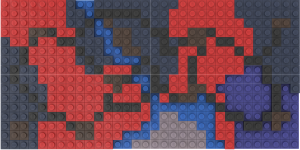
540 Romans, 180 from each unit, were gathered in Legoia to resupply under the command of Jupitus Tuso, the 2nd Band Tribune of the 70th. Around noon on the 19th day of the war, an unexpected noise was heard. The rumble of airplane engines. The three Aquilifirae heard from exited soldiers that the planes looked Roman. They were pleasantly surprised, as they had not expected supply shipments from Nova Italia, but they assumed their requests had been heard. Many rushed out to the Airfield, on the outskirts of Legoia, as 10 large cargo planes landed. They formed up in Ceremonial Organization, preparing to receive shipments of supplies that would help them greatly in the war. A few soldiers reportedly noted that none of the planes had the Roman Ensign on their tails, but this was brushed off, as many cargo planes in the outer colonies were older, and their appearance was less vigilantly maintained. The doors to the first plane opened, and Gunfire broke out from inside, lighting up the front lines of the Ceremonially Organized Romans. They panicked, and dashed for cover, trying to flee the unexpected Enemy. Several planes had not yet landed, and opened fire on the crowd, as more and more Rebels who they hadn’t even known existed until just then flooded out of the Planes on the ground. 1,625 Rebels of the 6th Resisting Division landed in Legoia that day. 47 of them were killed, but not a single one of the Romans left the Legoia Airfield. The Leader of the Resupply Mission - Jupitus Tuso, was captured rather than executed as all other Roman Soldiers attempting to flee had been.
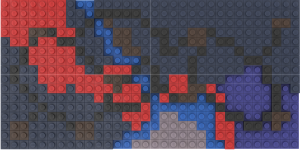
Krennic received the News by sundown on the 19th day, and immediately gathered his officers to inform them of his plan of action. His speech was recorded. It went as follows. “Romans, countrymen. Many years ago, I fought to free New Rome from an oppressive government. Now others are doing the same thing to what they believe is the same kind of government. We came here with the mission of defeating the Rebels. However, since they’ve taken back Legoia, we are dangerously low on supplies. We cannot sustain an attack on Legoia, we cannot sustain an attack on Gaius, we cannot sustain an attack on Rufusville. If we wish not to lose, our course of action must bring us supplies. Spalke has a small store. So does Inare. We must move to these places if we are to have a fighting chance. Otherwise, the Rebels have already won their freedom.” Krennic ordered Centurion Segira to move the 70th out of Reiths, and resupply what they could in Spalke. He also moved the 60th and 80th south from Brutuville, rather than east towards the Rebels, to try and reach Inare to resupply what they could. The 1st emerged from Rufusville as soon as the 60th began to leave Reiths, however, the 60th’s fuel reserves were running out, and many Roman Soldiers ended up having to walk along the road behind the convoy, and abandon their transports when they ran out of Diesel. The 1st moved into Reiths, where they were greeted happily by the civilians. Ren’s forces raced to reclaim Brutuville, which had seen tough fighting just a day and a half before, but now held not a single Roman Soldier. The Rebels, quite literally, just walked into the city. Ren hijacked the Roman-State-Television Station in Brutuville to make an announcement. He offered any Roman Soldier who would come to them, and lay down his weapons & equipment a full pardon, and potentially transport back to Nova Italia. The next day, the 50-strong rear guard who had been left in Spar to maintain order offered a conditional surrender to the 6th Resisting Division in Legoia (who had just flown in). Provided they were granted proper rations, pay, and pardon, they would be willing to offer their services to the Rebels. The 6th Resisting Division’s Colonel Antonia Hadrian di Sala Serana, herself a Roman Deserter (She was the first woman accepted into the Roman Military, and had risen through the ranks very quickly. However, the prejudice she faced for her gender eventually pushed her to leave the Roman Military altogether, and join Ren) was sympathetic, and accepted their surrender. She did not re-arm them in her own troops, however, explaining to them that she needed assurances of their intentions. The 50 men would later be integrated into the Army, though. Leaving 100 men & women in Legoia to maintain peace, and watch over the 50 deserters, the 6th then moved out, to meet up with Ren & his three divisions.
Battle of Inare
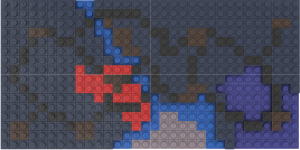
Meanwhile, in Inare, the Romans had found only a small supply depot, much of which had already been taken by the Rebels. And, there was other bad news for them, as well. They had travelled slowly, thanks to their low fuel reserves, and the 3rd, 4th, 5th, and 6th were all bearing down on them, much faster than expected. Krennic ordered that they refill every vehicle that had made it to Inare from any fuel depot that remained. However, from the 80th’s shelling of the city (during which 2,347 civilians had been killed), most of the Military Fuel Depots as well as Commercial Petrol Stations had been destroyed. However, enough fuel was found to evacuate 750 men to Spalke, where the 70th reported there was much more fuel. Krennic decided that they would have to evacuate 750 at a time, crossing the river on their invasion boats, and just hope that they made it to Spalke before the Rebels arrived. The first 750 arrived safely in Spalke, and the trucks returned, with the boats carrying them across the river, for the second wave of evacuations. The loaded trucks made it to the boats, and the first half were loaded on. They were transported across the river, and got off, now on their way to Spalke. The boats returned to the Balka shore again, where the 4th set of 375 men in trucks were preparing to cross. The boats set off slowly across the huge river, and made it nearly halfway before they were attacked. From nearly a mile up shore, surface-surface missiles were launched, almost all of them finding home in the sides of the ships. Now the soldiers in Inare were trapped. They launched a counter offensive, not realising the size of the Rebel Army entering the destroyed city. The Romans suffered huge casualties initially as they marched out into the open, while the Rebels once again used rubble as cover, before realizing the size of the Rebel forces. The 60th Centurion, Stefan Sidareta, who had remained in Inare to coordinate the evacuation quickly sent Ren an offer of Surrender. Ren accepted, and both sides were ordered to ceasefire. Of the 3,535 Romans who made it to Inare, 1,125 crossed the river successfully. During the sabotage of the boats & the ensuing battle, 1,478 Romans were killed. The remaining 932 surrendered their weapons and equipment, and were held in the Roman’s Second POW camp, roughly 40 miles outside of Inare. The Rebels had lost far fewer from their ranks; 379 soldiers didn’t go home from Inare.
The Fall of Roman Rule
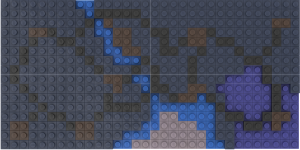
Krennic, Yan Segira, and Liassem Horatian (The 80th’s Centurion) were now holed up in Spalke, along with 2,124 Roman Soldiers. 870 members of the 1st Resisting Division were approaching from the Southwest, 50 of their own soldiers and 100 members of the 6th were approaching from the north, and the rest of the 6th was approaching across the river, along with the entire 3rd, 4th, and 5th. The 4 units had quickly rebuilt the bridge that the Romans had destroyed enough that it could be used, and had crossed the Lisenne. Within a few hours, they had the Romans surrounded. Krennic had hoped to make a final stand, and potentially fight a corridor to Legoia. However, when his troops took inventory in Spalke, they realised that they didn’t have enough rations, fuel, or ammunition to fight back. Ren’s counter-counterstrike had been exceptionally well planned, just as Krennic had feared. Krennic declared that, as NRR Soldiers, they would still fight the rebels. But his soldiers disagreed. They became restless, and nearly rioted as they demanded that Krennic accept Ren’s terms of surrender. Eventually, as Ren’s armies continued to prepare to attack Spalke, Krennic relented. He dispatched a soldier with what he called an “offer” to Ren. All first-hand reports claim that it was more a plea. He offered to turn over all of his officers as Prisoners of War, provided that his soldiers received a Pardon. Ren, who had already offered pardons, accepted the “offer,” and his armies marched into Spalke, to no Resistance. Krennic, Segira, Horatian, and three Band Tribunes (one had surrendered with Sidareta in Inare, one had been captured in the Third Battle of Legoia, and one had been killed in the Death Charge) were arrested, and every soldier who surrendered their weapons and equipment was given a pardon, and sent to a POW camp to await extradition back to the NRR. The Roman Defence against the Rebellion was over.
Only a few soldiers refused to surrender, among them Michael Osborne, the famous billionaire inventor from the NRR. He was not a registered NRR soldier, but had been visiting his son, Leo Osborne, who was a Military Engineer in the 14th. The two of them, along with 36 other NRR Soldiers, refused to surrender, and were arrested. Ren expressed remorse for arresting Osborne, who he held in great respect, and was unaware of Osborne’s participation in the war. All 48 Officers & Loyalist Soldiers were trucked back to Legoia, where Ren officially declared the Campestrem Regionem independent. He offered the NRR Senate, headed by Consul Lucius Rufus Brutus, a deal: They sign a Treaty, recognising the Campestrem as an Independent Nation, and the Campestrem’s new government send every NRR Soldier that had surrendered back home. He received an official reply the next day. The NRR was willing to relent. A personal representative of the Consul, Brutus, was flown out the next day, the 38th of Actaber, 227, to draft a treaty with Ren. After 6 hours of deliberation and finalisation, the representatives of the Resistance and the Representative of the Consul signed a “Recognition of the legitimacy of the Government of The Independent Nation of Campestrem.” Ren had conquered the Romans, and freed the Irin. For the first time in more than 230 years, the Irin were free.